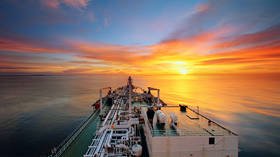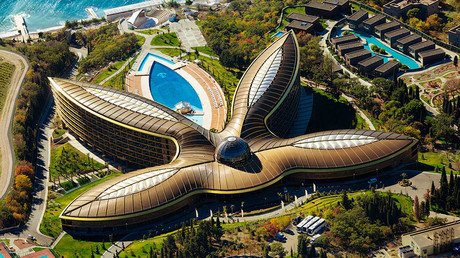Russia, US compete for Asian LNG market share

As US President Donald Trump doubles down on his energy ambitions, Russia is not-so-quietly positioning itself to become the ‘go-to’ LNG provider for the Asia Pacific region.
For several years, at least since Donald Trump became president more than two years ago, the US has insisted that American sourced liquefied natural gas (LNG) is the answer for Europe’s gas diversification needs, particularly a long-needed pivot away from geopolitically charged Russian pipeline gas.
Also on rt.com Russia can become world’s top natural gas producer – Shell CEOMoreover, US claims that its LNG is the answer for European gas and energy security needs have caused rifts in EU-US relations, particularly relations between longtime allies Washington and Berlin. In a televised meeting with reporters and NATO Secretary-General Jens Stoltenberg before a NATO summit in Brussels last year, Trump said, referring to the controversial Nordstream 2 gas pipeline project, that it was “very inappropriate” that the US was paying for European defense against Russia while Germany, the biggest European economy, was supporting gas deals with Moscow.
Read more on Oilprice.com: US, Canadian rig count plunges as oil retreats
Since that time Berlin has been the first to blink as it promised to develop more LNG infrastructure and procure not only more US but Qatari and other producers’ gas. However, the country is still pushing through with the Nord Stream 2 project. The Russian-led $11 billion gas pipeline will stretch some 759 miles (1,222 km), running on the bed of the Baltic Sea from Russian gas fields to Germany, bypassing existing land routes over Ukraine, Poland and Belarus. It would double the existing Nord Stream pipeline’s current annual capacity of 55 billion cubic meters (bcm) and is expected to become operational by the end of next year.
Also on rt.com Serbia greenlights expansion of Russia’s Turkish Stream gas pipelineNow, the US energy patch may have another hurdle to overcome, which also intersects the largest LNG market in the world - the Asia Pacific region which accounts for 72 percent of global LNG demand. On Wednesday at an LNG conference in Moscow, Shell's Senior Deal Lead Stuart Bradford said Russian LNG is well positioned to compete with North American projects to reach new markets in Asia and the Atlantic Basin despite challenges. He added that Russian LNG can offer several location options - the planned capacity expansion at the Sakhalin plant, the Arctic with Yamal LNG and Arctic LNG 2 projects led by Russian Novatek, and the Baltic coast, with the Baltic LNG project.
However, he also said that North American projects benefit from lower capital expenditures, from so-called “special relationships” as well as being supported by lower tax regimes, than their Russian project counterparts. Bradford added that the commercial arrangements in North America are implemented on “basis risks,” with gas prices based on the well-established Henry Hub, adding that competition is healthy. “Shell is convinced that Russia LNG can commit to these challenges.” However, Bradford’s comments need to be taken in light of Shell’s participation in the fledgling Russian LNG sector. The company, the world’s largest corporate LNG buyer and seller, is currently involved in two Russian LNG projects: Baltic LNG and Sakhalin-2.
Also on rt.com US could soon take Saudi crown to become top global oil exporter – IEAShell is also forecasting that LNG sales will spike this year. Last month, the Anglo-Dutch oil major forecast that global LNG trade will rise 11 percent to 354 million tonnes this year as new facilities in Australia, the US, Russia and elsewhere increase supplies to Europe and Asia. More countries are also building LNG import or receiving terminals. Shell said that LNG trade rose by 27 million tonnes last year, with Chinese demand growth accounting for 16 million tonnes of those volumes. However, some of this demand growth will not only come from China, but India, Pakistan, Bangladesh, Thailand, and in time the Philippines, and Vietnam. The Philippines and Vietnam, however, have yet to construct their first LNG receiving terminals.
This article was originally published on Oilprice.com














